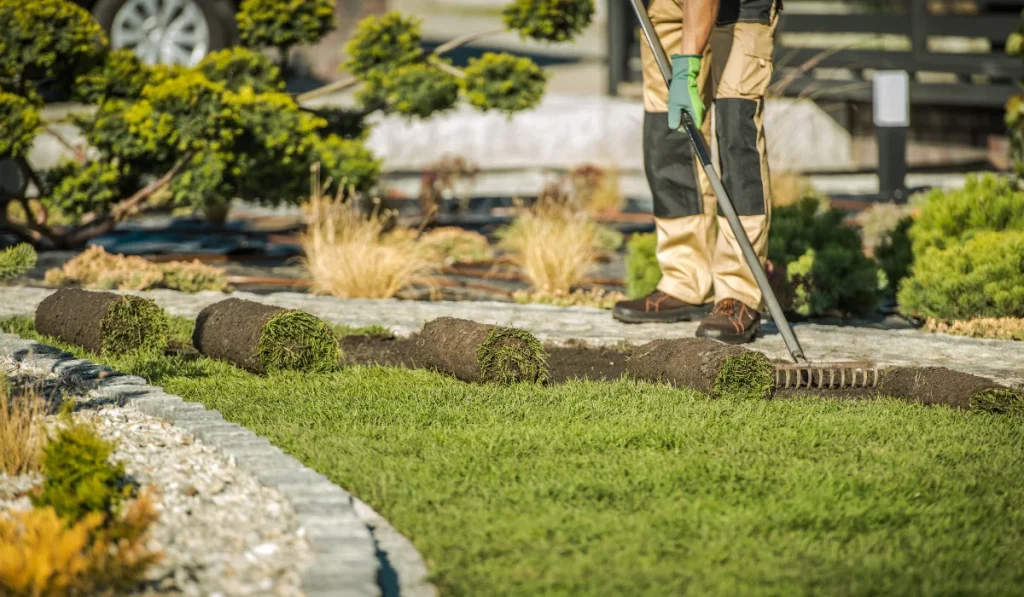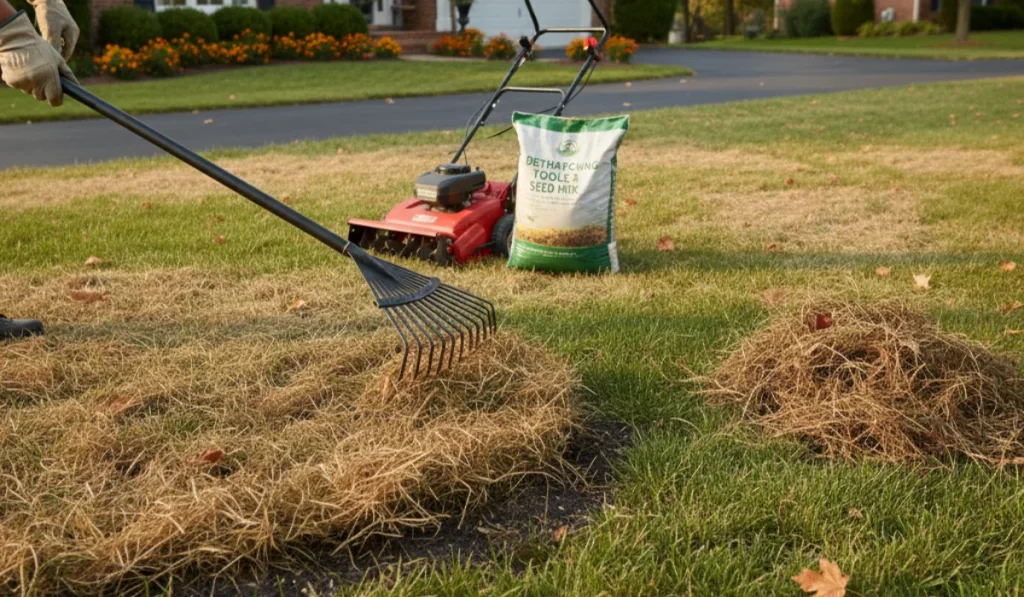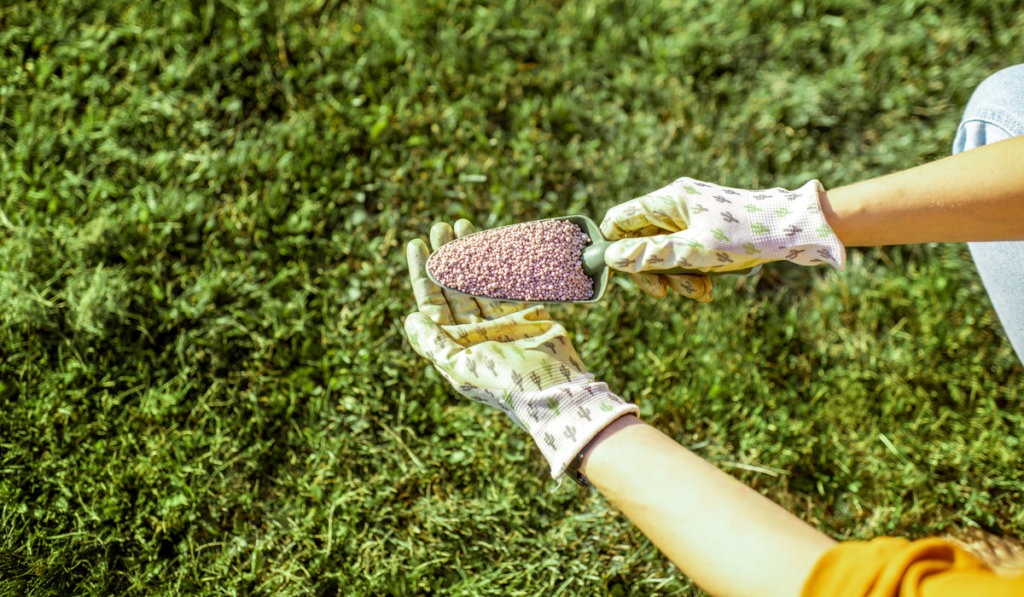Finding the best sod for clay soil can transform your yard into a home oasis. For clay soil, the top choices include Tall Fescue, Kentucky Bluegrass, and Bermuda Grass. These varieties thrive well in clay’s dense and nutrient-rich environment.
Which sod will give your clay soil the edge it needs? Keep reading to discover the top sod options and how to make them work for your yard.
Key Takeaways
- Tall Fescue and Zoysia Grass are ideal for clay soil due to their deep root systems and tolerance for varying conditions.
- Fine Fescue and Bermuda Grass are preferred for their aesthetic appeal and durability, especially in high-traffic lawns.
- Proper sod care for clay soil includes ensuring good drainage and mixing in organic materials to improve soil structure.
- Regular maintenance, such as aeration, proper watering, and using a smart irrigation system, is crucial for the health of sod on clay soil.
Top Sod Options for Clay Soil
Choosing the right sod for clay soil requires careful planning, as each variety may require different sod care. Here are the top sod options you can consider for your clay soil.
Tall Fescue
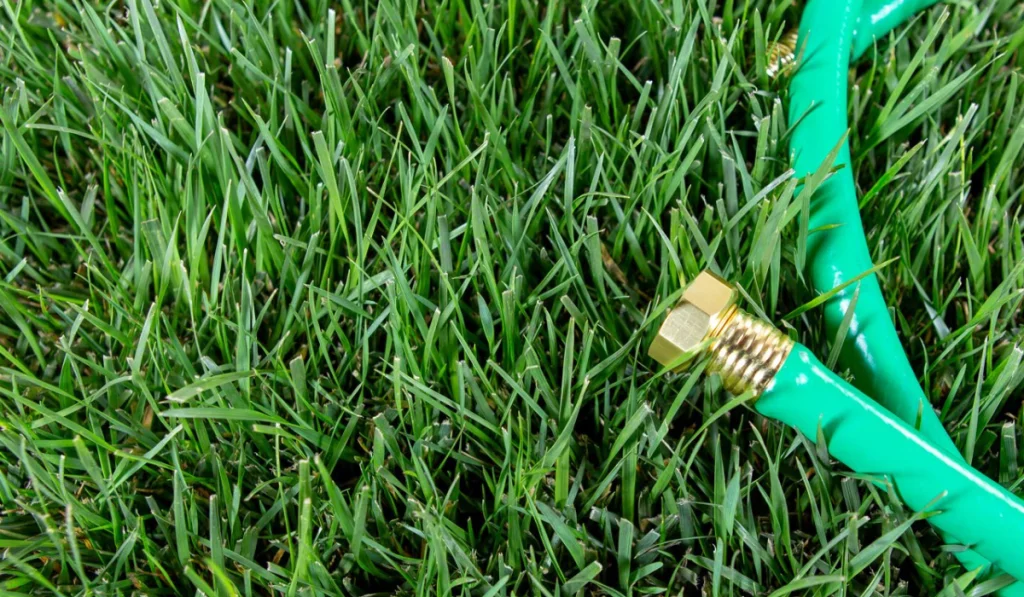
Tall Fescue is a versatile and resilient grass ideal for clay soil. Known for its deep root system, it can thrive in sunny and shady spots, offering a tolerant solution for varying conditions. As a cool-season grass in regions with mild winters, it can offer a longer green season than warm-season varieties.
Fine Fescue
Fine Fescue encompasses several grass types, including Creeping Red, Chewings, and Hard Fescue. It is particularly good for poor soil quality, such as clay. Its fine texture and shade tolerance make it a favorite for an aesthetically pleasing lawn, especially in cool-season climates.
Bermuda Grass
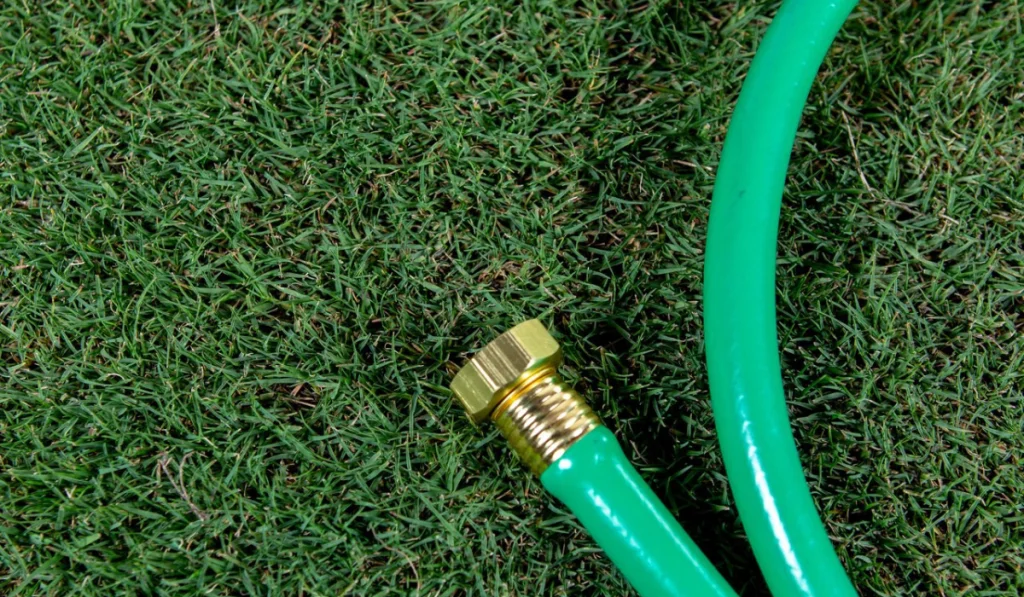
Bermuda Grass is a warm-season grass that excels in full sun. Known for its durability and dense growth pattern, it can withstand heavy foot traffic, making it perfect for lawns with high activity levels. Due to its deep root system, this grass is drought tolerant.
Zoysia Grass
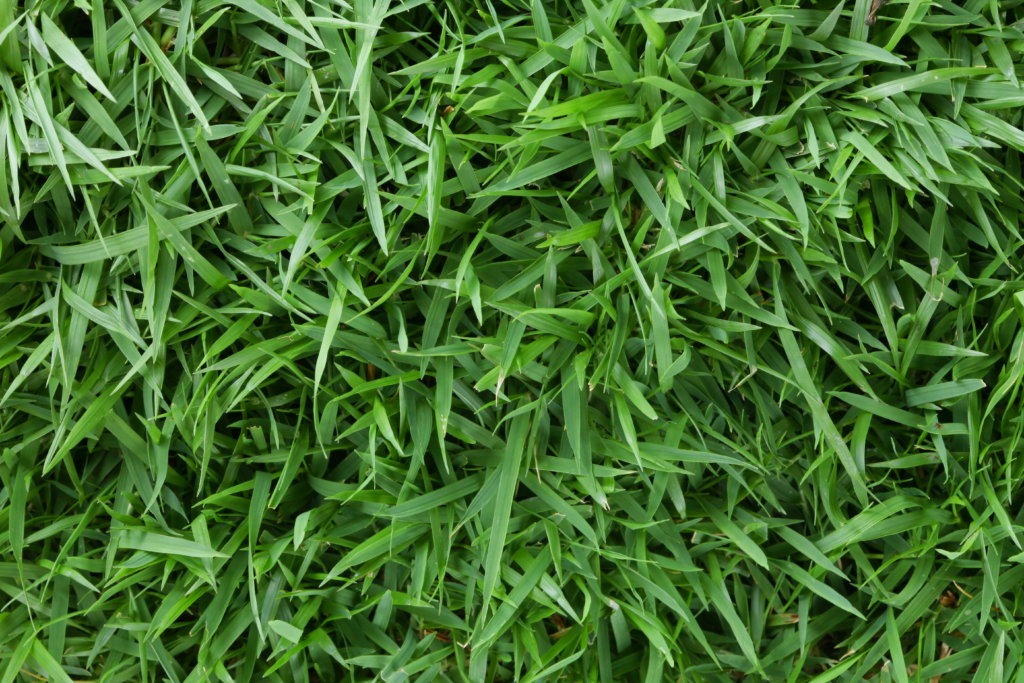
Zoysia Grass is prized for its thick, lush appearance and ability to handle various soil types, including clay. As a warm-season grass, it spreads through stolons and rhizomes, creating a dense turf. Requiring less frequent mowing and watering, it’s perfect for those looking for a relatively low-maintenance turf type.
Other Grass Options for Clay Soil
Besides the top sod options, other grass types can have unique characteristics that may make them suitable for clay soil. However, there may be critical considerations that can heavily affect your decision.
Red Fescue
Red Fescue is a fine-textured grass known for its shade tolerance and ability to grow in poor soil conditions. It features a dense root system that helps it thrive in clay soil as the roots penetrate and stabilize compacted layers.
Disclaimer: While Red Fescue works well in clay soil, it may need extra care in extreme drought or heavy traffic. Maintaining its appearance may require overseeding in high-traffic areas.
Perennial Ryegrass
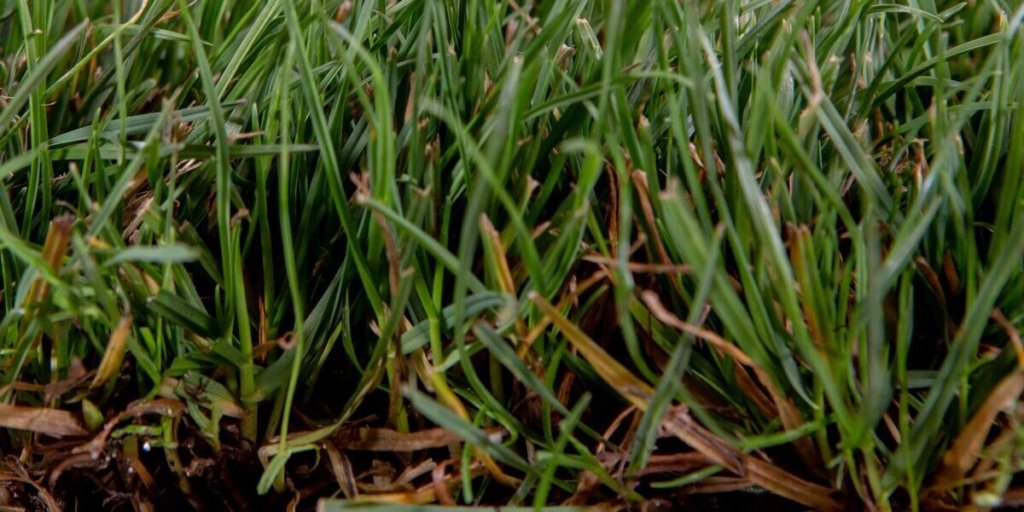
Perennial Ryegrass is prized for its quick germination and establishment. It quickly forms a lush, green lawn, making it a popular choice for erosion control. It’s fine blades and rich color add aesthetic value to lawns.
Although it prefers well-drained soils, it can adapt to clay soil with proper management.
Disclaimer: Though adaptable, Perennial Ryegrass needs good drainage and mixed seeding to flourish in clay soil environments.
Kentucky Bluegrass
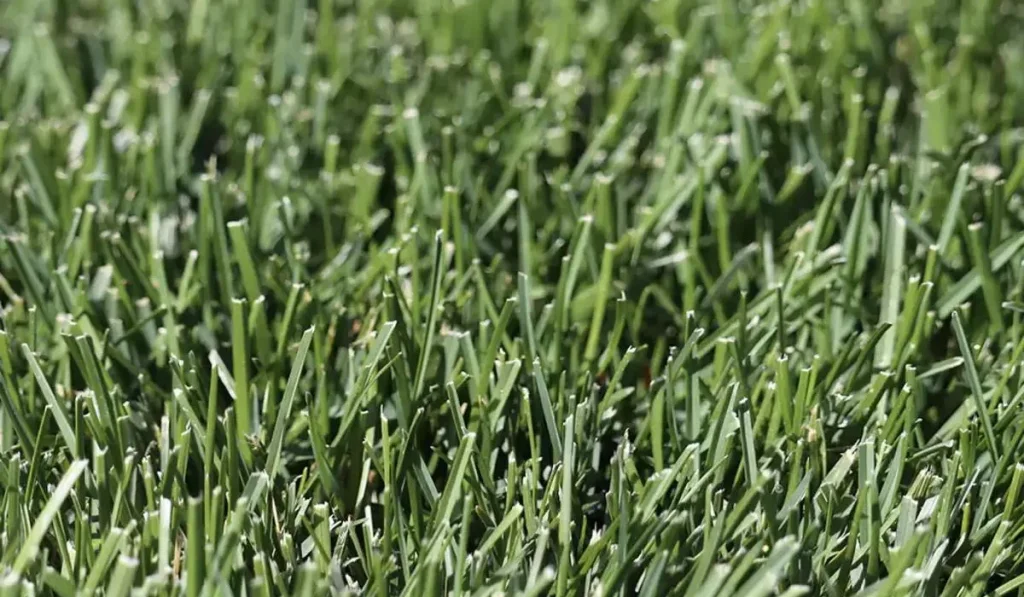
Kentucky Bluegrass is renowned for its durability and lovely, thick green carpet appearance. It spreads through rhizomes, which helps it fill in bare spots and create a uniform lawn.
Disclaimer: When prepared for clay soil, it can establish a resilient lawn with proper aeration and care. However, it requires consistent maintenance and fertilization to remain healthy.
Selecting the Best Sod for Clay Soil
Choosing the right grass for clay soil can be tricky due to the soil’s unique properties. Since the best grass seed for you may not be the best for your soil type, consider factors such as:
| Criteria | Importance |
|---|---|
| Root System | Essential for stability and nutrient uptake, especially in compacted soils. |
| Drought Tolerance | Crucial for sustaining growth with minimal watering in arid climates. |
| Seed Mix | Promotes a resilient lawn by combining the strengths of different grass types. |
| Compaction Resistance | Key for healthy grass in high-traffic or heavily used areas to ensure proper soil aeration. |
| Seasonal Growth | Optimal planting timing maximizes growth by aligning with the natural growing season. |
Tips for Laying Sod on Clay Soil
While laying sod is best done by professionals, you can do it yourself as a homeowner. With careful planning and effort, laying sod can be a rewarding DIY project. Here are some handy tips to help you achieve a beautiful new lawn:
- Start by performing a soil test to identify nutrient deficiencies.
- Incorporate organic material into heavy clay soil to improve its structure.
- Aim for at least 2-3 inches of organic matter like compost or peat moss.
- Add a mixture of topsoil and loam to lighten clay soil and improve drainage.
- Before installing the sod, use a rototill to mix in the amendments deeply.
- Level the area using a rake to create an even surface for the new lawn to thrive.
- Once the ground is prepped, lay the sod as soon as possible.
- To help it establish roots quickly, water the sod thoroughly right after it’s laid.
- Keep the soil consistently moist for the first few weeks.
- Avoid oversaturation to prevent root rot.
- Look for signs of stress in your new grass, such as wilting or yellowing grass.
- Adjust watering as needed.
Keeping Your Sod Happy on Clay Soil
To ensure your sod thrives in clay soil, consider implementing these effective lawn care maintenance strategies:
- Irrigation System: Use a smart irrigation system to provide consistent moisture, avoiding oversaturation and preventing runoff.
- Aeration: Aerate the soil periodically to improve drainage and allow better root penetration. Use a core aerator to get the best results.
- Top Dressing: To help break up compacted soil and improve soil structure, apply a thin layer of compost or sand as a top dressing.
- Starter Fertilizer: When installing new sod, use a starter fertilizer to give the grass a healthy beginning.
- Lawn Care: Maintain the existing lawn regularly, including feeding and watering, to avoid diseases.
- Mulch: Apply a light mulch layer to help retain moisture and provide nutrients. Mulching with grass clippings can be especially beneficial.
- Overseeding: Plant grass seeds in bare or thin areas to ensure a dense lawn. Overseeding in the fall or spring works best.
- Mowing: Mow regularly to maintain an optimal grass height. Using a sharp mower blade prevents tearing and maintains a healthy lawn.
- Spreader Use: Use a spreader for seed, fertilizer, and other lawn treatments to ensure even distribution and prevent patchy growth.

